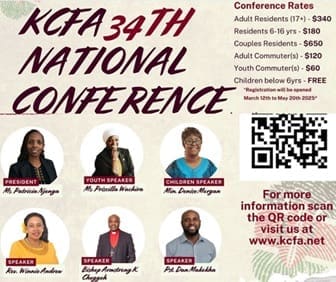
Campaigns for the 2017 Presidential election are promising to be a different ball game for key contenders as new dynamics emerge among the voting population.
Instructively, the main protagonists appear to have recognised this fact, and they are going all out to ensure their campaigns are tailored to handle these dynamics.
The next election will possibly have the highest number of new and youthful voters, being the first time that Kenyans in the diaspora will vote.
More than five million Kenyans who were too young to vote in 2013 will have attained the voting age of 18 years by the next general election.
These are persons who were between 13 and 17 years old during the last elections. Today, they are between 16 and 20 years.
As at the 2009 census, there were 5,034,855 who were aged between 10 and 14 years, and who will have turned 18 years between 2013 and 2017.
This group will join another six million who were too young to vote in 2007 but had attained the voting age as at the last election. This group is now aged between 20 and 24 years.
The two groups compromise more than half the estimated 20 million eligible voters in the country – meaning that the most critical decision on who becomes President lies in the hands of people in their 20s.
This group of young Kenyans are seen as not inclined to the tribal nature of Kenyan politics, and will, therefore, be a definitive factor in the next election.
Kenya is one of the countries experiencing a major youth bulge, and given this numerical strength, this is a core group that politicians are expected to target in their 2017 campaigns.
This explains why the two main rivals in the 2013 elections – President Uhuru Kenyatta and Cord leader Raila Odinga – have taken a different approach in their early campaigns.
Recent activity by the two have shown that their strategists are alive to this new dynamic that is likely to change the face of Kenyan politics.
A photo that appeared on all the three majors papers, on the same day last week, sent tongues wagging as Raila Odinga’s campaign strategy became clear.
It was a photo of the former Prime Minister taking a selfie with university student leader. Selfies are relatively a phenomenon among the youth and is seen as trendy – locally and abroad.
A week later, Raila was on One FM discussing youth matters during a breakfast show at the urban contemporary radio station.
Then Uhuru also took it to another level making history as the first President to allow school children to spend the night at State House.
The President’s team sent out photos of the President having fun with the students inside State House and listening to their aspirations.
Uhuru, who has recently upset the youth for appointing old guards into parastatals, also allowed the students to sit in through a Cabinet meeting last week.
His deputy William Ruto was not left behind. The following day, another group of students who are under a new mentor-ship programme by the Presidency, spent the morning with Ruto at his Karen official office.
Photos show Ruto going through his briefs in the company of the students in what the Presidency has said is cultivating a culture of responsibility among the young people.
Though Uhuru continues to attract negative criticism from the youth, his government has continued to increase funds for Uwezo Fund and the National Youth Service.
It is also important to note that Kenya’s 2010 constitution also changes the political game, and a youth can now run for a seat in the National Assembly or the Senate.
The constitution also allows independent candidates to run for office. This means youth who have in the past been locked out of parties by the entrenched old guard can run for elective positions without party endorsement.
But observers say despite their numerical strength, the youth are not enthusiastic enough about elections in Kenya, and politicians will need to work hard to convince them to register as voters and come out in large numbers on voting day.
Acceptability among the young generation will, therefore, be key for anyone who wants to take up leadership especially for one to click the 50 per cent plus one vote needed for the Presidency.
Despite the tribal and religious hurdles, politicians eyeing the big seat are not giving up and have embraced social networking to reach out to the youth.
Looking at the breakdown, of the five million new likely voters, the highest number of 1.3 million were censured in the Rift Valley with Eastern coming second at 751,222. Nyanza had 736,716 people aged between 10 and 14 in 2009, whille Western had 597,808.
Other regions had the figures at 506,343 (Central), 437,214 (North Eastern), 398,614 (Coast) and 246,965 (Nairobi), at the 2009 census.
These figures many not be the same today due to issues such as deaths and moving abroad for possibly studies or employment.
But those who have gone out of the country now have an opportunity to vote in the next election as the IEBC sets up structures to ensure they participate in the polls.
During the 2013 general election, only diaspora Kenyans living in Uganda, Tanzania, Rwanda and Burundi were allowed to participate, but could only vote at the Presidential level.
According to the IEBC, out of the estimated 12,426 eligible votes in the EAC region, 2,637 were registered voters and 2,328 turned up to vote.
This registered an impressive 88 per cent voter turnout, higher than the national voter turnout of 86 per cent at the 2013 election.
It is estimated that there is at least three million Kenyans living and working abroad with a majority of them having attained the voting age.
In February, IEBC launched an online tool for mapping Kenyans residing outside the country to enable the commission to identify the number and location of eligible voters in the diaspora.
In the 2013 elections, Raila bagged the majority of the diaspora vote with 1,224 voting in his favour as compared to 951 who voted for Uhuru.
Raila also recently launched a new website as well as an SMS service for this supporters to follow his activities most of which are aimed at wooing voters for 2017.
Uhuru and Raila are also active on social media, through their respective team, as a way of reaching a large number of these youthful Kenyans who are users of social networking sites – Facebook and Twitter.
These platforms are also critical in reaching the diaspora community especially at a time when they are preparing to vote in the next election.
In 2013, Uhuru who had his running-mate as Ruto, tested this youth phenomenon. Not only were politicians moving to parties that are run by young people, they are keen on young party officials with no political ambitions.
In May 2012, Uhuru announced The National Alliance (TNA), a party run by youthful professionals, as the political vehicle for his Presidential bid.
Uhuru’s party was run by young people between 30 and 35 – the chairman and now a nominated MP, Johnson Sakaja, being 28 years at the time.







